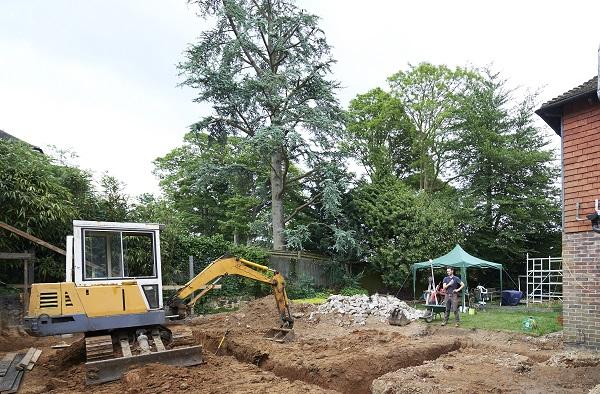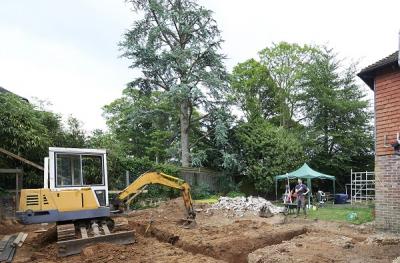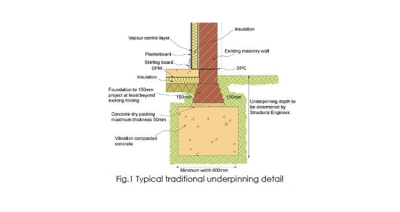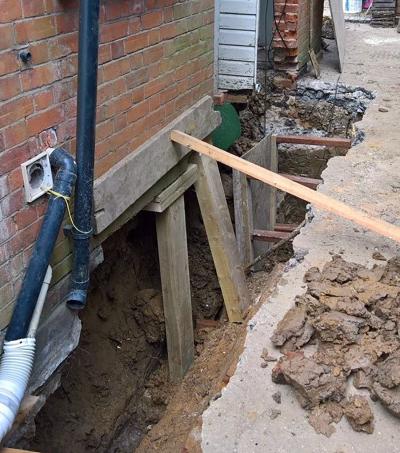Trees and foundations (foundation depth calculator)
Building on sites where trees are present can be tricky.
Trees and other vegetation can affect moisture content considerably, leading to soil shrinkage (commonly known as subsidence) or swelling (commonly known as heave). This can cause cracking and movement of foundations and damage to whole structures.
And it is not just trees in close proximity to your site that pose danger - trees up to 30m away have been known to draw moisture from the soil at a proposed building site.
LABC Warranty Foundation Depth Calculator
Different trees have different water demands, so it is important to also consider and identify trees on adjacent sites.
Once you have identified your trees, you need to get the most appropriate foundation depth for your building or extension. For this you may be able to use the LABC Warranty Foundation Depth Calculator, which is designed to help determine the exact foundation depth required when building near trees.
The depth of foundation is determined by the:
- Plasticity index of soil
- Water demand of the tree
- Mature height of the tree
- Distance of relevant tree to nearest part of foundations and distances elsewhere if stepping foundations
- Allowance for climatic conditions
Because the calculator allows you to select the actual plasticity index of the soil (if known from testing), it gives more accurate results for foundation depths, which can save you having to dig deeper than actually necessary.
The freely available Foundation Depth Calculator covers the vast majority of trees found in the UK. If a tree is not listed, you should consult a structural engineer and an arboriculturist for advice. Also think about obtaining advice on a foundation design from a suitably qualified and experienced structural or civil engineer.
Found this article interesting? Read more about working with foundations
- Foundations on clay soil
- How to get it right: Building a wall on foundations
- How to get it right: Using reinforcement in your foundations
- Offset foundations: For when you're tight to the boundary
- Underpinning of existing foundations
- Raft foundation basics
Please Note: Every care was taken to ensure the information was correct at the time of publication. Any written guidance provided does not replace the user’s professional judgement. It is the responsibility of the dutyholder or person carrying out the work to ensure compliance with relevant building regulations or applicable technical standards.
This article was updated on August 2024.
Sign up to the building bulletin newsletter
Over 48,000 construction professionals have already signed up for the LABC Building Bulletin.
Join them and receive useful tips, practical technical information and industry news by email once every 6 weeks.
Subscribe to the Building Bulletin




Comments
Reply
Submitted 6 years 6 months ago
Thanks for your comment.
Hedgerows can cause problems to foundations in a similar way to trees.
Although you've mentioned some type of trees you'll need to find out which species are contained in the hedge and then calculate depths accordingly. If the species isn't listed you will need to seek further advice.
Thanks,
John, LABC
Webmaster note
Submitted 6 years 6 months ago
Footings
Submitted 5 years 4 months ago
Reply to: Footings
Submitted 5 years 4 months ago
You'll need to contact your local building control team who should be able to answer your specific technical query. You can find your local team by entering the postcode of your project in the 'find your council' bar at the top of this website.
Regards,
LABC
Hedge
Submitted 4 years 11 months ago
Reply
Submitted 4 years 9 months ago
Typically, it is correct to treat hedgerows as tress, grouping trees together to form a hedgerow can increase the water demand from the soil exacerbating the problem. Increased depth may well, therefore, be required, dependant on the soil type. Professional advice should always be sought when proposing any excavations near to trees.
Kind regards,
Martin, LABC
Ychwanegu sylw newydd